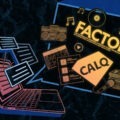Alt Z’s journey began in the late 2010s, emerging from the depths of the Internet. It is a product of the digital era, born out of online communities and platforms like SoundCloud, YouTube, and TikTok. Unlike traditional genres, Alt Z wasn’t confined to a specific geographic location; it’s a global phenomenon, shaped by the limitless boundaries of the Internet. Its rise to mainstream recognition in the early 2020s marked a significant shift in how music is created and consumed in the modern digital age.
Influences
This genre is a testament to the cultural melting pot of the 21st century. It draws from a wide range of influences, including indie, hip-hop, electronic, and pop music. The cultural impact of social media, Internet memes, and the DIY ethos of the Internet generation are deeply ingrained in its roots. Artists in this genre often blend diverse musical styles, reflecting their varied cultural backgrounds and the interconnected nature of the digital world.
Sound
Alt Z is characterized by its experimental soundscapes, combining lo-fi aesthetics with polished production techniques. Key instruments include synthesizers, drum machines, and samplers, alongside traditional instruments like guitars and pianos, often processed with effects like reverb and distortion for a dreamy or edgy feel. Vocals are a crucial element, frequently altered with auto-tune or vocoders, adding a surreal quality to the music.
Affect
At its core, Alt Z music is defined by its emotional versatility. It’s as much about introspection and melancholy as it is about euphoria and escapism. The genre is known to convey a sense of longing and existential angst, resonant with a generation grappling with the complexities of modern life and the digital landscape. This emotional depth, combined with its eclectic sound, makes Alt Z a genre that not only defines but also connects with the sensibilities of today’s youth.
Read more from our series: Evolution of Shoegaze: A Symphony in a Whirl of Sound.
“Falling for U” by Peachy! feat. mxmtoon (2017)
This song perfectly encapsulates the early vibes of Alt Z. It’s a dreamy, lo-fi track with delicate ukulele strums and soft vocals. The song’s introspective lyrics and laid-back sound became a hallmark for the genre, resonating with listeners who sought comfort in its simplicity and emotional depth.
“Cradles” by Sub Urban (2019)
“Cradles” is known for its eerie and catchy melody, combining electronic elements with a haunting vocal performance. The song gained immense popularity on TikTok, showcasing how social media can catapult Alt Z tracks into the mainstream. It’s a blend of dark, whimsical themes with an undeniably catchy rhythm.
“death bed (coffee for your head)” by Powfu feat. beabadoobee (2020)
This track epitomizes the introspective and melancholic side of Alt Z. Featuring a sample of beabadoobee‘s “Coffee,” the song combines lo-fi hip-hop beats with reflective lyrics about love and loss. Its rise to popularity on TikTok highlights the genre’s strong connection with digital platforms and youth culture.
“VOID” by Melanie Martinez
Melanie Martinez has been a prominent figure in shaping the sound and aesthetic of Alt Z music. Martinez is known for her distinctive, theatrical style, often weaving intricate narratives and dark, whimsical themes into her music. VOID encapsulates her signature approach, blending haunting melodies with thought-provoking lyrics.
Don’t forget to check out past articles in our series, like Evolution of K-Pop : a Choreographed Cultural Phenomenon.
Written by Tyrus “Sir Louie“ Facey
Illustration by Holly Li





















